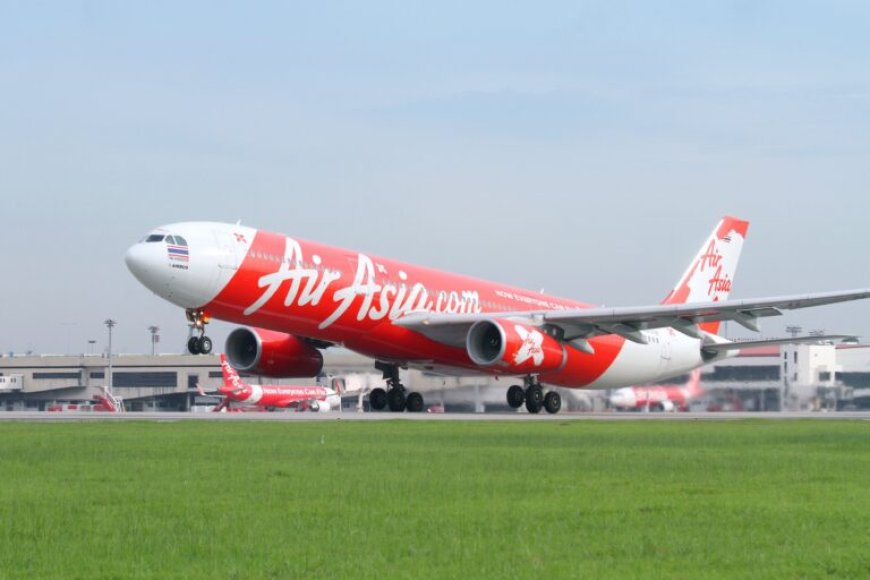AIRFARES WILL REMAIN HIGH, BUT THAI AIR ASIA X HAVE HAD A GOOD YEAR
report by ING Bank NV highlights that the global aviation industry is still grappling with complex supply-chain issues. Despite

AIRFARES WILL REMAIN HIGH, BUT THAI AIR ASIA X HAVE HAD A GOOD YEAR
The flying public can expect high air fares to continue as airlines struggle with a shortage of planes, rising labour costs, limited spare part… all limiting their ability to meet the surge in travel demand.
A report by ING Bank NV highlights that the global aviation industry is still grappling with complex supply-chain issues. Despite a rebound in air travel demand, expected to surpass pre-pandemic levels this year, ongoing problems at Boeing and defects in Pratt & Whitney engines are restricting aircraft availability and dampening the recovery.
The report notes a record backlog of orders at both Airbus and Boeing, with a growing demand for second-hand planes. This is driving up leasing rates, particularly for the popular single-aisle models like the Boeing 737 and Airbus A320 and 321. Additionally, a shortage of skilled workers is causing delays in retrofitting or refurbishing older aircraft.
Airlines worldwide are reconsidering their growth strategies and even cutting flights due to these myriad challenges. In the Asia-Pacific region, carriers such as Singapore Airlines, Qantas and Air New Zealand are experiencing aircraft delivery delays and unexpected maintenance issues.
The report notes that the global airline fleet hasn’t managed to keep up with demand.
“With capacity constraints, pricing power remains with carriers.”
So far, whilst constantly complaining about it, passengers are agenerally ccepting the higher costs and booking flights. Globally, air fares are expected to stay high, with European ticket prices rising 15-20% above inflation in early 2024.
“People are prioritising travel despite more expensive tickets.”
Other significant points from the report include:
Delivery delays, extra maintenance, extreme weather, geopolitical tensions and labour disputes will impact airline profitability this year.
Aviation emissions are likely to approach pre-pandemic levels in 2024. Despite growing awareness of the environmental impact, many people, especially younger travellers, are unwilling to cut back on flying.
India’s expanding population and increasing wealth will make it a major driver of future airline growth.
But in some positive news for the aviation sector, Thai AirAsia X expects to carry nearly 1 million passengers this year, driven by strong performance on its Japan routes, and is set to post a profit for the year.
Thai AirAsia X CEO Tassapon Bijleveld was happy to announce the profit for the medium haul airline.
“There is no seasonality for Japan routes, and we can maintain consistent bookings throughout the third quarter.”
Japan routes contribute 50% of the airline’s revenue, with a load factor exceeding 90%. Routes to South Korea and Australia are also significant revenue sources. Japanese passengers make up 35-40% of the total, with 60-65% from the Thai market, aided by the weak yen.
Thai AirAsia X says they will resume direct flights to Nagoya, halted during the pandemic, with four weekly flights from Suvarnabhumi Airport starting in August. The airline will also operate 36 weekly flights to four Japanese cities, including Tokyo, Osaka and Sapporo.
In 2024, Thai AirAsia X aims to carry 1 million passengers, reaching 90% of 2019 levels, with an average load factor of 85%. The airline reported its first post-pandemic operational profit in the first quarter of this year, exceeding 1 billion baht.
Thai AirAsia X is evaluating flights to Kazakhstan, noting strong demand for flights to Phuket, though this may not align with its current fleet. The fleet currently consists of seven A330s, with four more expected. The airline aims to operate 15 aircraft by 2025.
What's Your Reaction?














































































